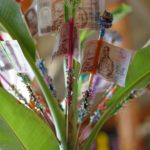A review of the financial integration of the population in South Africa shows that affordability restricts poor households’ access to financial services that are formalized. In our research that examined people’s usage of economic goods as well as services from 2008 between 2008 and 2015, we discovered that there was an overall rise in the use. However, this was heavily skewed towards households that had higher incomes.
Financial inclusion is defined as the capability for people to avail of various financial services. Some of these include savings and bank accounts, loans, and insurance products. Financially disadvantaged families cannot participate in any protection or accumulation. This includes paying for bills by direct debit to getting favorable credit.
The most important policy takeaway from our research is that more financial services should be targeted at those with lower incomes. It is a must due to the high percentage of marginalization among people with low incomes.
Measuring the use of resources in relation to income
In general, four dimensions define financial inclusion: accessibility, usage quality, and well-being. In our research, we concentrate on the use.
The financial services offered within South Africa range from the most well-known ones like credit cards and bank accounts to less well-known ones like hire purchase agreements as well as loans that include “mahonias” (loan sharks). For South Africa in the South African context, a bank account is the most commonly used financial product. The number of adult unbanked people fell in the period of 17 to 14 million in 2003 and 2017.
This investigation is the very first to examine the data of the National Income Dynamics Study fully. This study surveyed families from the same household (if it is possible) each year for two years in order to study the evolution of their income and welfare over time.
One of the most striking aspects that is unique to the report is that it surveys household heads to rate their use of 14 different financial institutions.
Through the use of statistical methods, we came up with an aggregate index of financial usage to study the characteristics of those who were financially included.
What we discovered
The study concluded that the increase in usage of services and financial goods was typically linked to households with higher incomes. Other traits of families and individuals who had higher use of financial services included middle-aged, white, more educated urban dwellers living in the Western Cape and Gauteng provinces. They were part of larger households with more members employed.
The possibility of total financial exclusion was higher in poor rural households throughout areas like the Eastern Cape, KwaZulu-Natal, and Limpopo provinces. Most of the time, these families were comprised of blacks. The study also revealed that households with low per-capita incomes and with fewer employees were associated with a higher risk of being excluded from financial services. Families of greater size and dominated by middle-aged individuals were significantly more likely to have financial inclusion and less chance of financial exclusion.
The table below shows the proportion of households having more than one adult who uses some form of known financial services. The results show that there was an uptick in usage of a wide range of financial services in the waves of one (2008) through 4. (2014/2015). Particularly, the percentage of households with at least one person with an account at a bank was up from 57% in the first wave (2008) to more than 78% in wave 4 (2014/2015). Those who hold personal loans from a financial institution nearly tripled (8.63 percent to 16.41 percent) between the initial (2008) and the last wave (2014/2015).
We also considered the impact of informal sources of financial information, including loans from the mahonias (loan sharks) that have grown from 1.69 percent in wave 1 to 2.97 percent in the fourth wave and loans from friends, family members, and employers. These rose by less than 2.85 percent to 8.76 percent. The use of other essential services, like hiring purchase agreements, credit card purchases, and pension plans or retirement annuities, is also increasing across each of the four waves. There’s a decline in the use of a few of the financial services that are considered to be major. For instance, households in which at least one person reported having a home mortgage or bond had 8.63 percent at the beginning of Wave One and slowly declined through the years, ending with 5.68 percent in Wave 4. There was also a slight decrease in student loans and car finance.
One financial source that makes itself known is the usage of credit cards. This dropped from 12.5 percent (wave 1.) to 9.74 percent (wave 4.).
For all four waves, households considered to be poor had lower use of all sources of financial aid.
The graph below illustrates the percentage of households that were totally financially deprived (they didn’t have one source of financial support). The proportion more than doubled from the beginning (36.77 percent) and the fourth (16.40 percent) waves.
What’s next?
The possibility of allowing alternative, black finance access and use is one possibility. It can range from inexpensive products and bank accounts to cutting-edge technologies that offer financial services to those who aren’t in a quick, cost-effective, and cost-effective way.
Other countries could be used as case studies.
In India, the government, as well as private companies, have collaborated in order to expand access to financial services like insurance at cheaper prices. The Indian government has established an insurance fund called the Social Security Fund that provides insurance companies with funds to help subsidize premiums for insurance policies that are for households with less. This program has provided more than two million low-income Indians with the insurance policy.
The promotion of a money pool is another alternative. The study of five Caribbean countries revealed that money pooling, which is where people with low incomes collect their cash and establish collective banks, assisted people in saving. In Cameroon, the practice of securing and lending through kinship networks and financial networks was proven to be more reliable than the traditional.
This calls for a financial system that encourages these channels and that is regarded as reliable by the public at large esp, especially those with low incomes.
However, initiatives to increase financial inclusion aimed at people with low incomes must be carefully monitored. This is due to the fact that they may not always affect, especially those with low incomes.




